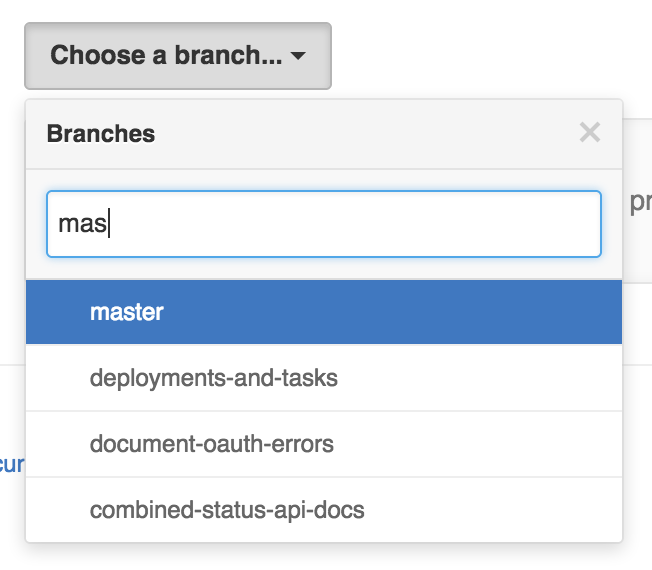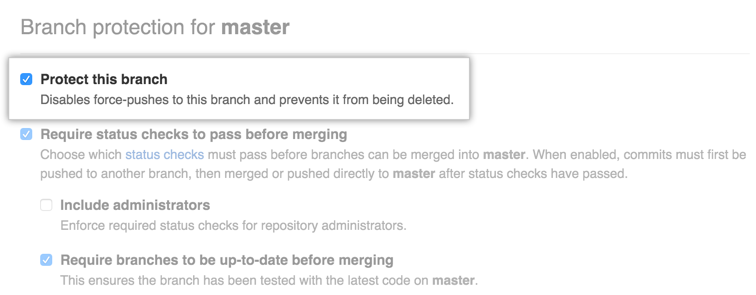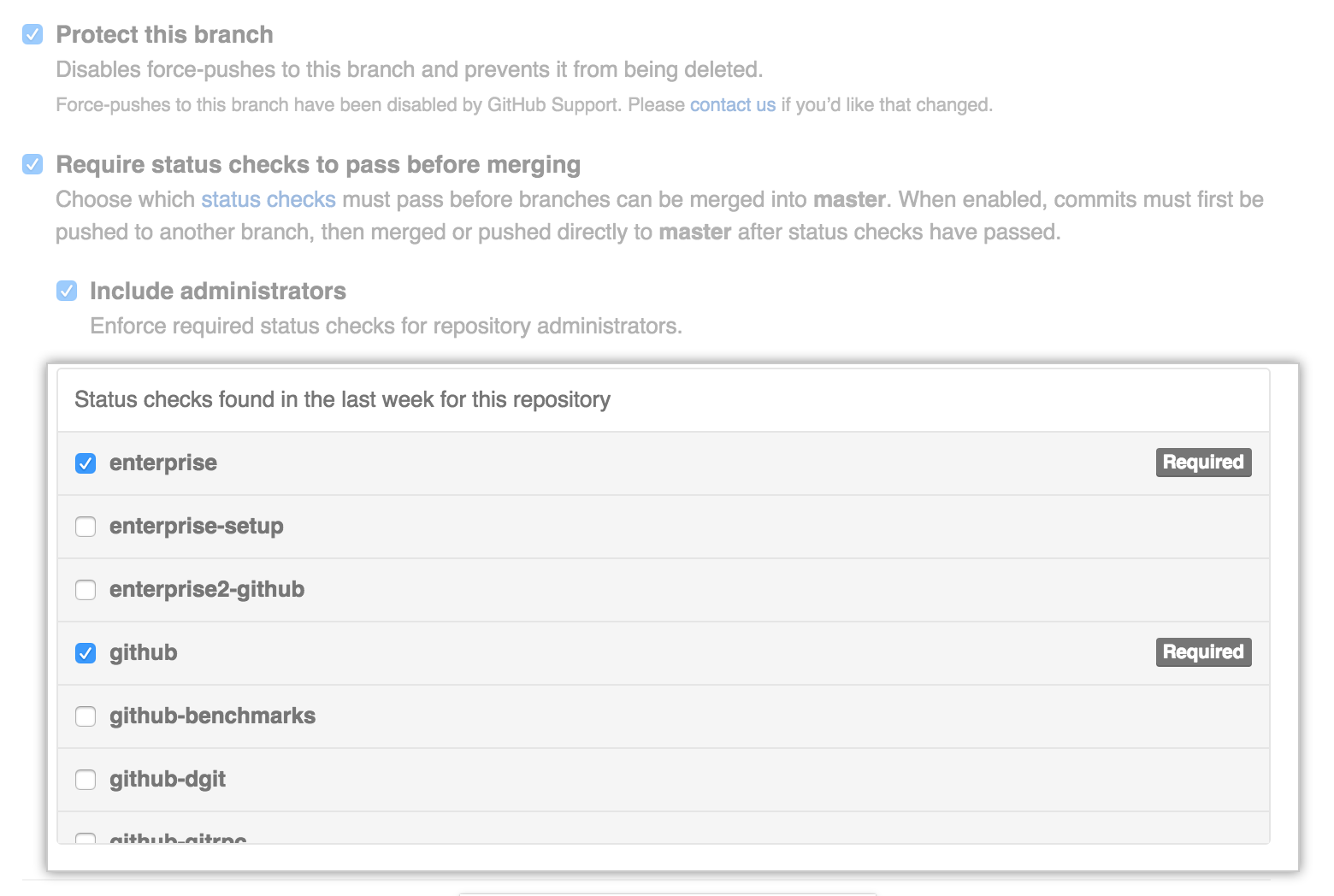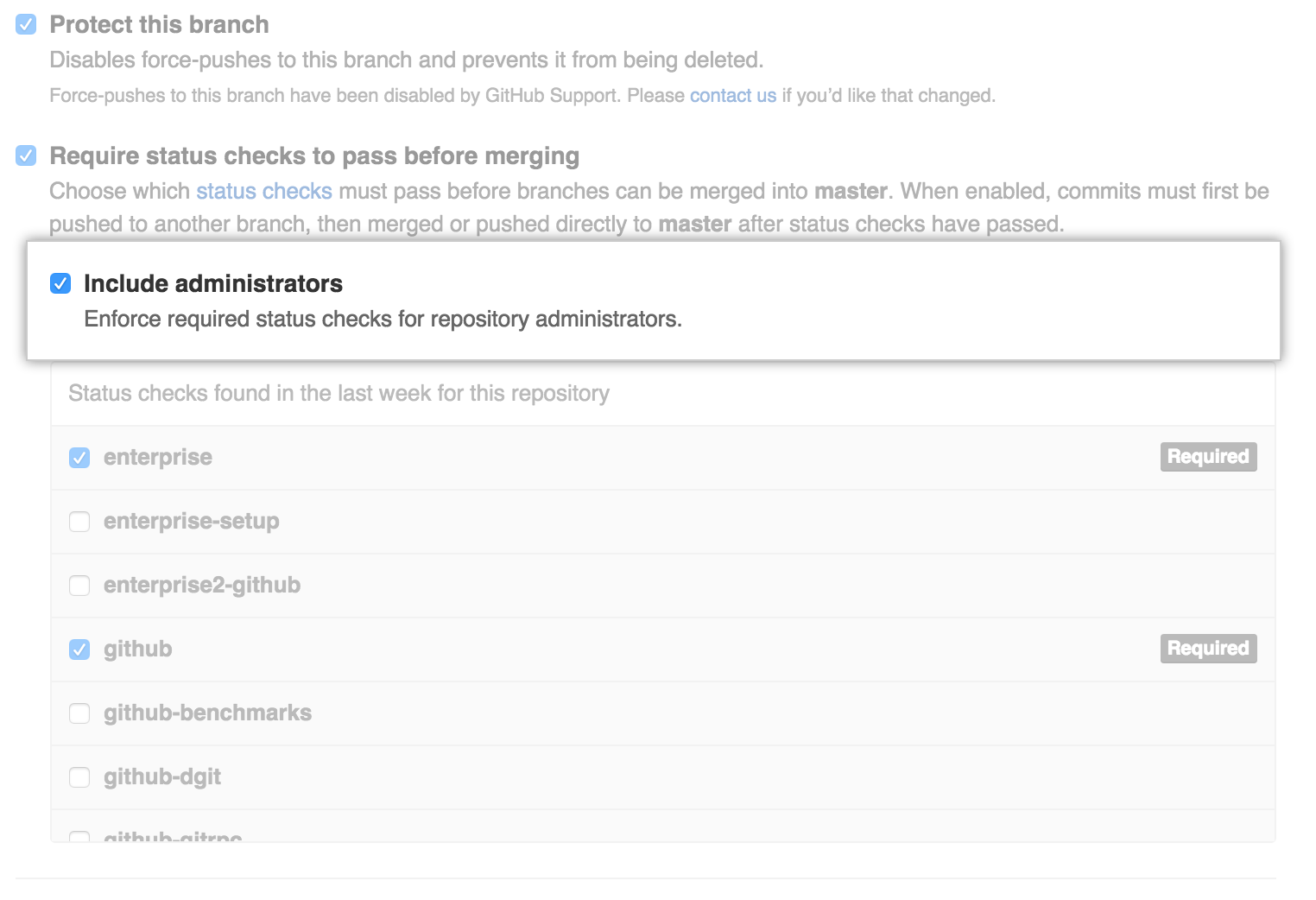Repository administrators can enable protected branches for limiting branch manipulation, as well as enforce required status checks before a branch is merged in a pull request or before commits on a local branch can be pushed to the protected remote branch.
Enabling a protected branch for a repository
On GitHub Enterprise, navigate to the main page of the repository.
Under your repository name, click Settings.

In the left menu, click Branches.

Under Protected Branches, select the branch you want to mark protected using the drop-down menu.

- Select Protect this branch.

- Click Save changes.
Enabling required status checks
On GitHub Enterprise, navigate to the main page of the repository.
Under your repository name, click Settings.

In the left menu, click Branches.

Under Protected Branches, select the branch you want to mark with a required status check.

- Select Require status checks to pass before merging.

- From the list of available status checks, select the ones you want to make required.

Optionally, select Include administrators. This enforces the required status checks on the repository administrators.

Click Save changes.
Tip: To successfully merge a pull request into a base branch that has required status checks enabled, the pull request's head branch must be up-to-date with the base branch.
